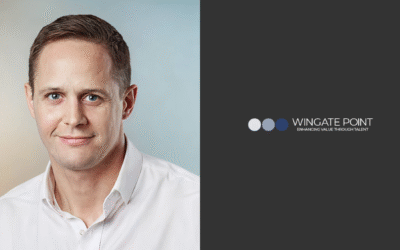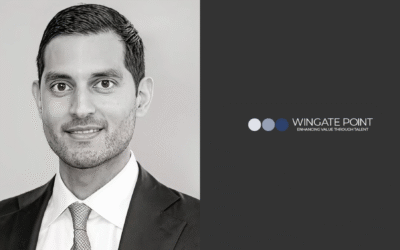James Almond, Partner at Duke Street Capital shares his views on Private Equity in time of COVID-19

Private Equity in the time of COVID-19
As Coronavirus infections soared across Europe and governments enforced nationwide lockdowns starting in March 2020, Private Equity firms collaborated closely with management teams of their portfolio companies to protect these businesses and their value. Learnings from the last financial crisis (still fresh in the memory of many in the industry) meant PE was quick to react. Actions largely focused on liquidity in the initial stages, drawing all available credit facilities, negotiating rent and interest payment holidays and deferrals, working out how government schemes might support companies, taking fee and pay cuts and all possible measures to help the companies through a time of extreme uncertainty. However, the differentiating factor making this crisis unique from any precedent recession was the complete shut down in business, meaning that the majority of sectors were affected in some way; from the obvious impact on leisure and travel sectors, to less obvious impacts on healthcare and industrial sectors for a myriad of reasons from cancelled elective surgeries to make room for Covid patients, to a seizing up of the supply chain or workforce.
After the initial firefighting, lengthier negotiations occurred with investors, lenders and landlords on how to support and finance these businesses through the period and tough decisions had to be made on reducing cost bases. Nonetheless, as the best managers will note, even crises throw up opportunities for growth. Looking at how portfolio companies can grow again or even accelerate that growth on the other side of the pandemic, perhaps with reduced competition from less well capitalised competitors or through a forced change in the business model, has also been a key topic for discussion.
Perspective for the future
Despite the dramatic impact on the economy and markets worldwide, one difference to the global financial crisis ten years ago has been that liquidity has returned relatively quickly. There are many firms sitting on large pools of committed capital from the last few heady years of fundraising, all looking for new deals to deploy that capital. If we return to the last crisis, the 2009/2010 vintage investments generated some of the best returns. The key drivers of these returns were a low entry price, the benefit of a long growth period of the cycle, longer holds to execute business plans and undergo operational change, and accretive bolt-on acquisitions of smaller companies at low prices. The question (and opportunity) is: will the same happen again?
The pricing of new deals seems to have fallen less this time due to the levels of capital available and some non-cyclical or “COVID-proof” sectors are showing very high pricing. Of course, there are plenty of auctions that have been shelved due to the crisis, so we will need to see if/when these are restarted what happens to the price at which these companies change hands.
On the fundraising side, it has been another reminder that committing to a traditional private equity fund is a 10-year plus blind-pool commitment – longer than the average marriage lasts in this country, in fact. Some investors may be seeking shorter time horizons going forward, or even sit on the side-lines whilst there is so much uncertainty about. Others may be fearful of missing some strong vintages again. Several investors, such as large pension plans, saw their PE asset allocations soar beyond the percentages they had targeted, primarily from the initial drop in public markets making PE disproportionate to their portfolios of public stocks. As PE valuations have been reported, and the public markets recovered, this has rebalanced to some extent but could result in a short term slow-down in investor appetite for the PE asset class. At this stage, with such a low interest rate environment, investors are likely to continue to allocate to PE, perhaps even increasing their target allocations to alternatives, including PE, in their search for the returns they need and targeting less volatility within their portfolios.
One thing that is easier to predict is that uncertainty is here for a while. There is the risk of the next waves of infections and any resulting lockdowns or social distancing actions to combat this and for the UK, there is another Brexit deadline approaching. Add to this the fact that there continues to be an uncertain political environment across several countries; and one can expect plenty of hurdles popping up that could shake any returning confidence. Life will eventually return to normal, perhaps a new normal, but we are probably due for a few twists and turns first. Luckily, PE has proven it has the ability to weather the storm throughout cycles.
Other articles
David Butler Partner at Chiltern Capital shares his thoughts of working with Wingate Point on a recent pre-deal MBI CEO search:
David Butler Partner at Chiltern Capital shares his thoughts of working with Wingate Point on a recent pre-deal MBI CEO search:We were working to a very narrow and specific brief, with a particular focus on deep vertical market knowledge within the 3PL and logistics...
Sumit Dheir, Senior Principal at Towerbrook Capital Partners comments on the support provided by Wingate Point during their recent buyout of JSM Group Services:
Sumit Dheir, Senior Principal at Towerbrook Capital Partners comments on the support provided by Wingate Point during their recent buyout of JSM Group Services:I have worked with Rob on a number of pre-deal assignments in the last few years and he has been able to...
Rob Guest was recently appointed as CEO of the Expromet Group through a search process led by Wingate Point and comments on his candidate experience:
Rob Guest was recently appointed as CEO of the Expromet Group through a search process led by Wingate Point and comments on his candidate experience:When Rob initially reached out to me about the opportunity, he quickly understood the key aspects of my personal and...
Privacy Policy
© 2025 Wingate Point Ltd. All rights reserved.


